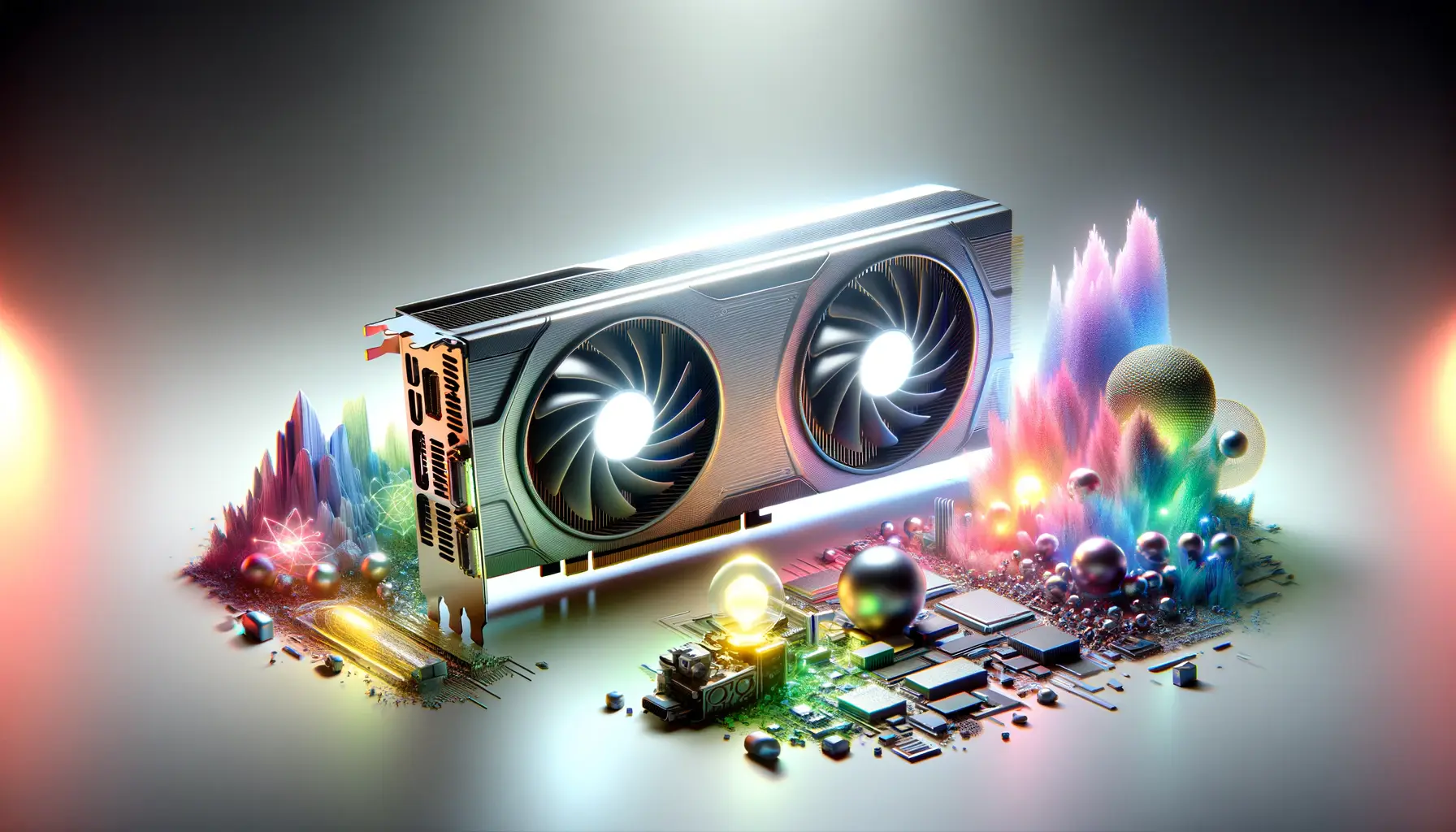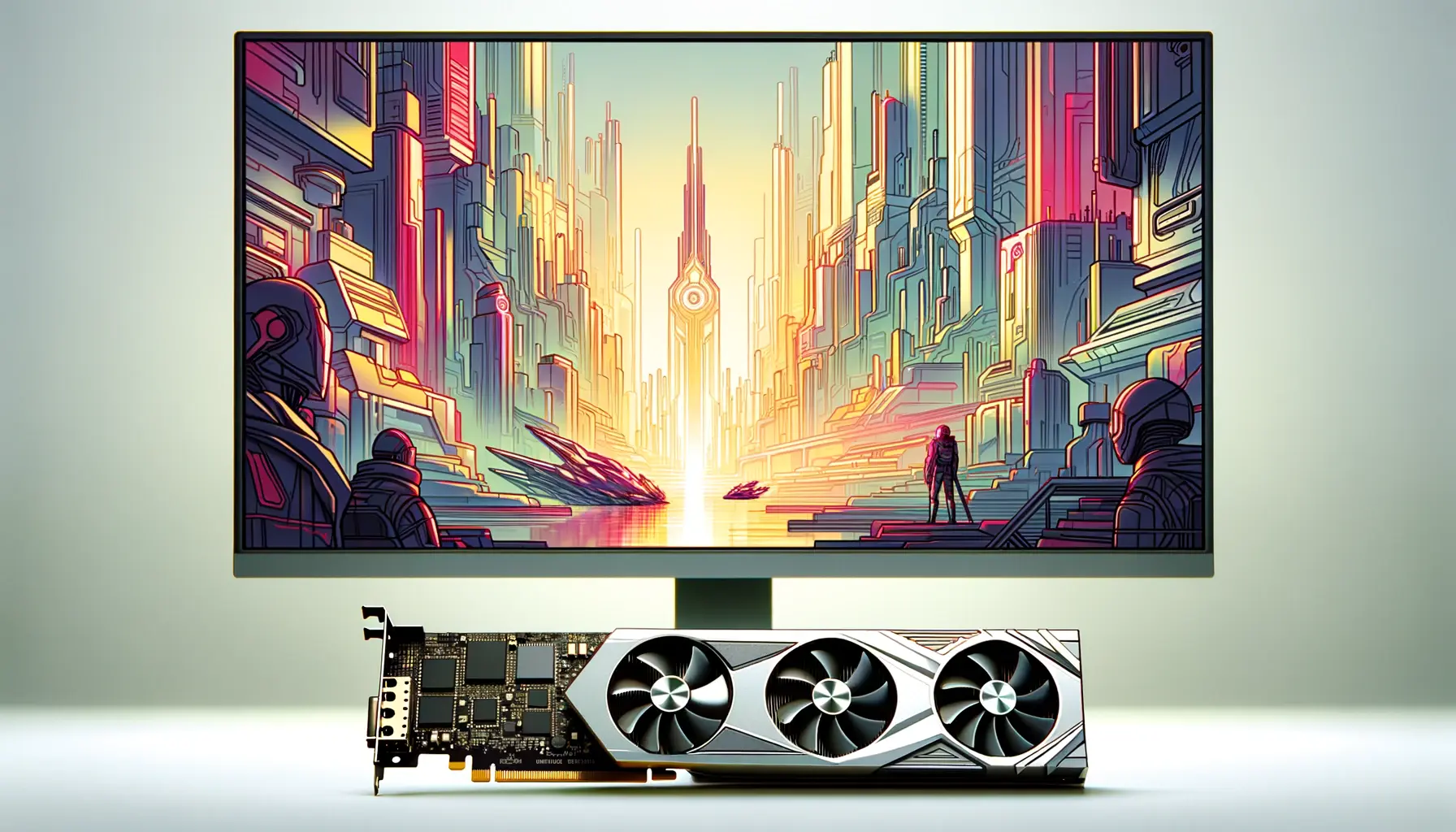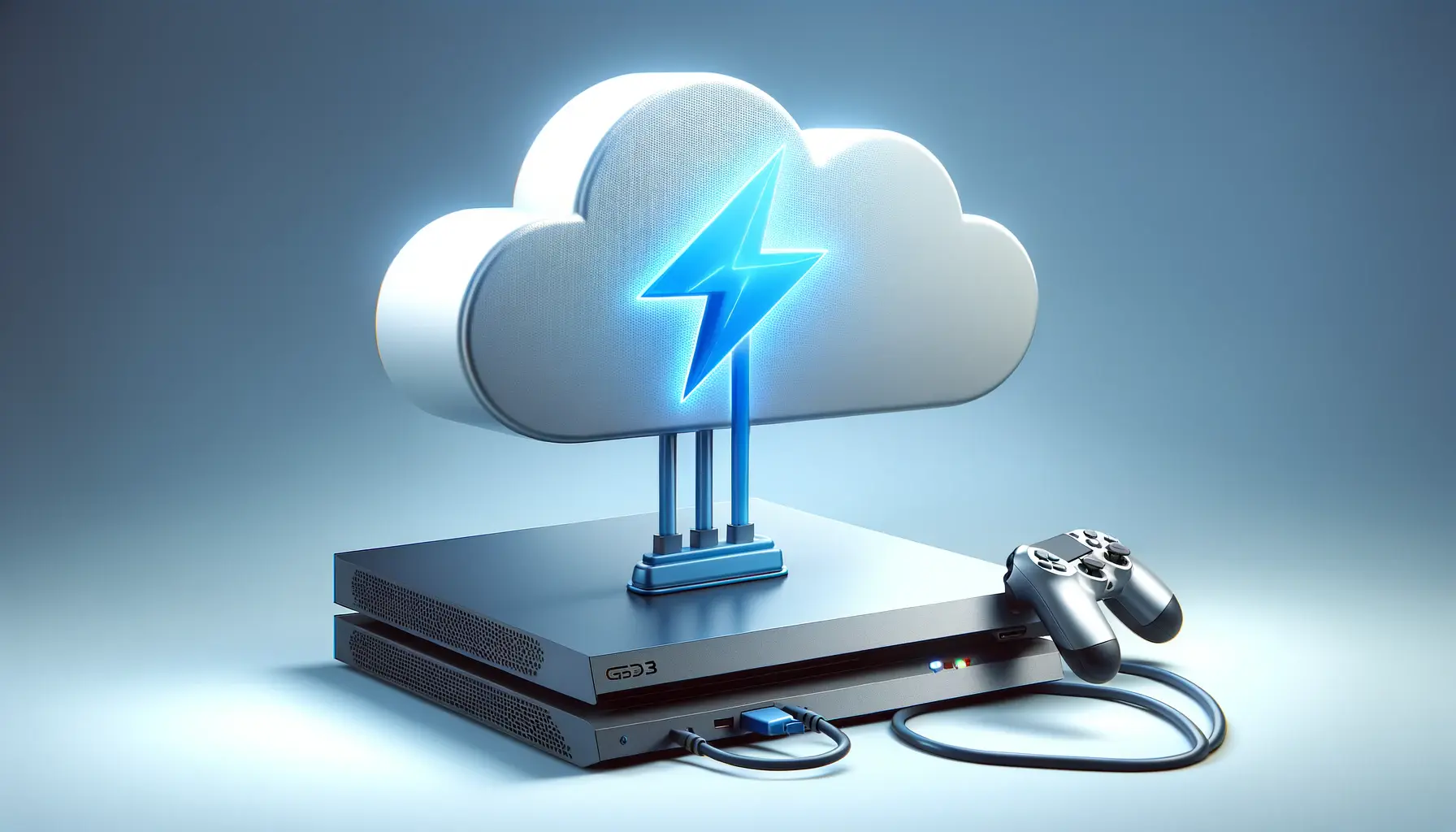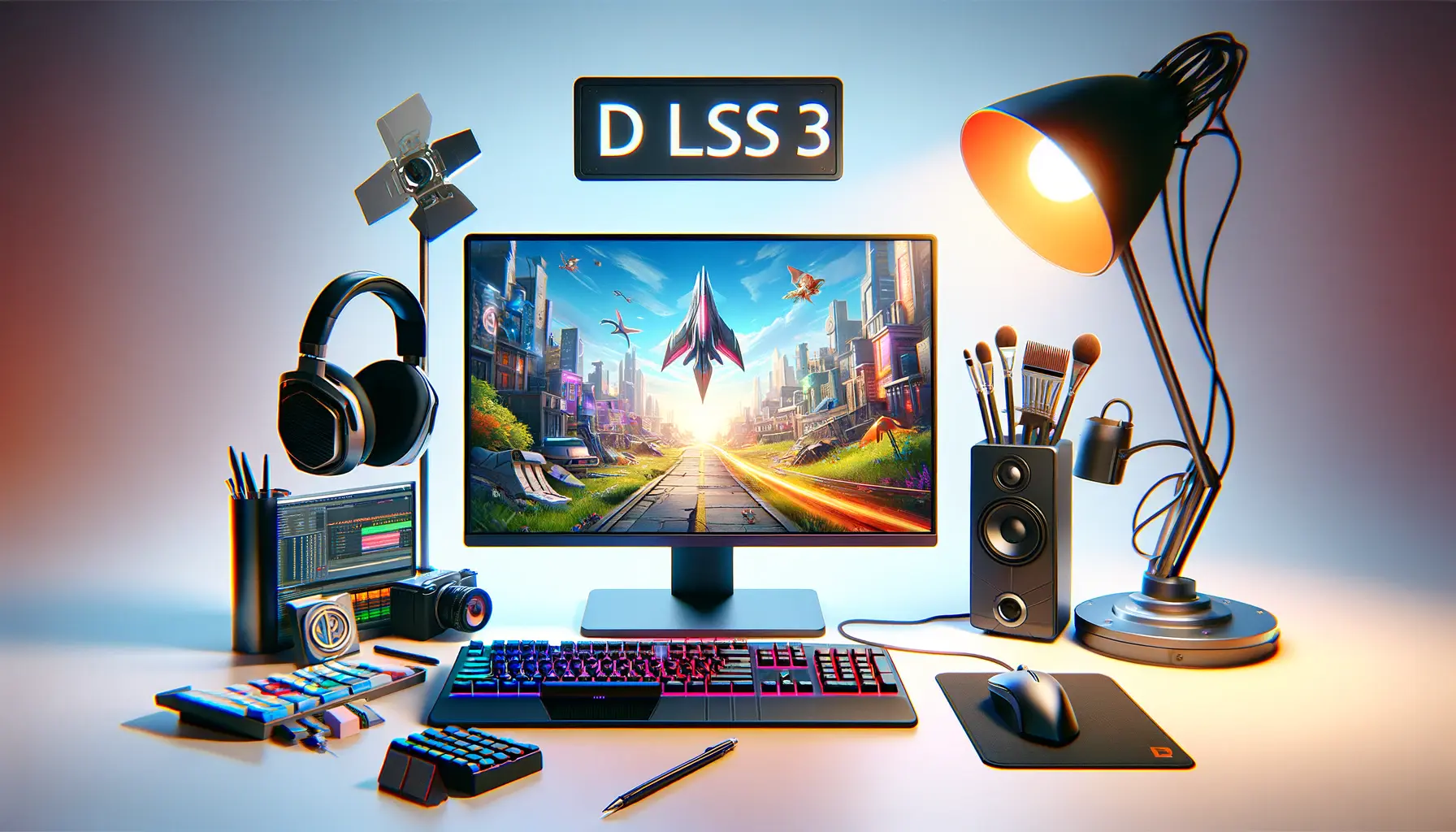The realm of competitive gaming, or esports, is one that thrives on the cutting edge of technology, where every frame per second (FPS) can be the difference between victory and defeat.
NVIDIA’s Deep Learning Super Sampling (DLSS) technology has been a game-changer in the world of gaming, offering enhanced performance and visual fidelity.
With the introduction of DLSS 3, NVIDIA aims to redefine the standards of gaming performance, particularly in the esports arena.
This technology promises to leverage artificial intelligence to push the boundaries of what’s possible in gaming graphics and performance, making it a topic of significant interest for gamers, developers, and enthusiasts alike.
Esports, as a competitive and highly skilled gaming discipline, demands the utmost in both hardware and software to ensure fair and high-performance gameplay.
DLSS 3, belonging to the NVIDIA DLSS (Deep Learning Super Sampling) technology category, represents the latest iteration in a series of groundbreaking enhancements.
By utilizing advanced AI and machine learning algorithms, DLSS 3 not only improves game visuals but also boosts frame rates, providing a smoother and more immersive gaming experience.
This article delves into how DLSS 3 is set to revolutionize the esports landscape, offering insights into its impact on game performance, player competitiveness, and overall visual quality.
- DLSS 3 and Its Impact on Esports
- DLSS 3’s Role in Game Development and Optimization
- DLSS 3’s Influence on Esports Tournaments and Broadcasting
- DLSS 3 and Esports Training Regimens
- Community and Industry Reception of DLSS 3
- DLSS 3 and the Future of Gaming Hardware
- Integrating DLSS 3 into Esports Venues and Events
- Revolutionizing Esports with DLSS 3: A New Era of Competitive Gaming
- DLSS 3 in Esports: Frequently Asked Questions
DLSS 3 and Its Impact on Esports
What is DLSS 3?
NVIDIA’s DLSS 3 technology is a revolutionary step forward in the world of gaming graphics and performance optimization.
Standing for Deep Learning Super Sampling, DLSS utilizes artificial intelligence to upscale lower-resolution images in real-time.
This process allows games to run at higher frame rates without compromising on visual quality, a critical factor in the fast-paced world of esports.
DLSS 3, the latest iteration, introduces frame generation alongside image upscaling, further enhancing performance by generating intermediate frames through AI.
This innovation significantly reduces latency and improves the smoothness of gameplay, making it an invaluable asset for competitive gamers.
The introduction of DLSS 3 into the esports domain has sparked discussions among gamers and tech enthusiasts alike.
By enabling higher frame rates and superior image quality on supported NVIDIA GeForce RTX graphics cards, DLSS 3 offers a competitive edge to esports athletes.
The technology’s ability to deliver a seamless and visually stunning gaming experience without taxing the hardware excessively means that players can enjoy the benefits of high-resolution gaming even on mid-range systems.
This democratization of high-performance gaming could lead to a more level playing field in competitive gaming environments.
The Competitive Edge in Esports
In the high-stakes world of esports, where milliseconds can determine the outcome of a match, the advantages provided by DLSS 3 are not just beneficial; they are transformative.
The technology’s capacity to double or even triple frame rates ensures that players experience less input lag, a critical factor in fast-paced games where reaction time is key.
This improvement in responsiveness can enhance a player’s ability to perform under pressure, making DLSS 3 a potent tool in the arsenal of competitive gamers.
Moreover, the visual clarity and fidelity offered by DLSS 3 mean that players can detect and react to on-screen elements more quickly and accurately.
For instance, spotting an opponent at a distance or noticing subtle movements in a cluttered environment can be the difference between winning and losing.
By providing crisper, clearer images, DLSS 3 helps players to make these split-second decisions more confidently, thereby improving their overall performance in competitive matches.
DLSS 3’s frame generation technology not only enhances game performance but also reduces visual artifacts, ensuring a more immersive and engaging gaming experience for both players and spectators.
DLSS 3’s Role in Game Development and Optimization
Enhancing Game Design with DLSS 3
For game developers, DLSS 3 opens up new avenues for creativity and innovation.
By alleviating the performance constraints traditionally associated with high-fidelity graphics, developers can now push the boundaries of game design.
This technology allows for the inclusion of more detailed textures, complex particle effects, and expansive game worlds without the fear of compromising the game’s performance on consumer-grade hardware.
Furthermore, DLSS 3’s AI-driven approach to rendering enables a more efficient development workflow.
Developers can focus on creating visually stunning and immersive game environments, knowing that DLSS 3 will optimize these settings for the best performance across a wide range of systems.
This not only enhances the gaming experience for players but also broadens the game’s accessibility to a wider audience.
Optimization Challenges and Solutions
Implementing DLSS 3 is not without its challenges.
Game developers must carefully integrate the technology into their game engines and ensure that it works seamlessly across different game scenarios.
This requires a deep understanding of both the game’s visual requirements and the underlying DLSS technology.
However, NVIDIA provides extensive support and documentation to assist developers in this process, facilitating a smoother integration of DLSS 3 into games.
To overcome these challenges, developers often employ a variety of strategies, including:
- Customization of DLSS settings: Tailoring the DLSS implementation to fit the specific needs and visual style of the game.
- Feedback loops with NVIDIA: Working closely with NVIDIA to optimize DLSS performance and address any game-specific issues.
- Community engagement: Gathering feedback from the gaming community to fine-tune DLSS settings and ensure the best possible gaming experience.
These strategies ensure that DLSS 3 not only enhances game performance but also maintains the artistic vision and integrity of the game’s visual design.
Incorporating DLSS 3 into game development is a collaborative effort between developers and NVIDIA, aiming to achieve the perfect balance between performance and visual quality.
DLSS 3’s Influence on Esports Tournaments and Broadcasting
The integration of DLSS 3 technology extends beyond individual gaming experiences, significantly impacting the broader esports ecosystem, including tournaments and broadcasting.
This influence is multifaceted, enhancing not only the competitiveness of the games but also the viewing experience for audiences worldwide.
At the heart of esports tournaments, performance and visual clarity are paramount.
DLSS 3 ensures that the games played at these events can run at the highest possible frame rates while maintaining crisp, clear graphics.
This is crucial for competitive play, where every detail matters, and players need to react in milliseconds.
The technology’s ability to upscale graphics in real-time without compromising performance means that tournaments can be played on state-of-the-art displays, showcasing the games in their best light.
Improving Player Performance
For competitors, DLSS 3 provides a tangible advantage.
The smoother frame rates and enhanced visual fidelity contribute to better game performance, allowing players to execute precise movements and strategies more effectively.
This leads to higher-quality matches and, ultimately, a more competitive and exciting tournament.
Enhancing Spectator Experience
The benefits of DLSS 3 also extend to those watching the tournaments, either in person or via broadcast.
High frame rates and superior image quality ensure that viewers can follow the action without missing a beat, making for a more engaging and enjoyable viewing experience.
This is particularly important in fast-paced games where understanding the nuances of play is essential to appreciating the skill level of the competitors.
Furthermore, esports broadcasting can leverage DLSS 3 to deliver higher-quality streams to viewers.
By utilizing the technology’s capabilities, broadcasters can stream games at higher resolutions without requiring excessive bandwidth, making high-definition esports content more accessible to a global audience.
- The use of DLSS 3 in esports tournaments leads to more competitive and visually appealing matches.
- Players benefit from improved performance and precision, thanks to the enhanced frame rates and visual clarity provided by DLSS 3.
- Spectators enjoy a superior viewing experience, with high-quality broadcasts that make following the fast-paced action easier and more enjoyable.
DLSS 3 is reshaping the esports landscape, offering benefits that extend from the competitors to the global audience, enhancing the overall competitiveness and appeal of esports tournaments.
DLSS 3 and Esports Training Regimens
The advent of DLSS 3 technology has not only transformed the way games are played and experienced in competitive settings but also how esports athletes prepare and train for their competitions.
The integration of DLSS 3 into training regimens marks a significant shift in how players hone their skills and strategies.
Revolutionizing Training Environments
DLSS 3 enables the creation of more realistic and demanding training environments.
By leveraging the technology’s ability to deliver higher frame rates without sacrificing visual quality, training simulations can include more complex scenarios and graphics-intensive elements.
This allows players to practice in conditions that closely mimic the actual competitive environment, preparing them for the visual and performance demands of high-stakes tournaments.
Enhancing Reaction Times and Accuracy
One of the critical benefits of DLSS 3 for esports athletes is the improvement in reaction times and accuracy.
The smoother gameplay and reduced latency contribute to a more responsive training experience, enabling players to refine their reflexes and decision-making skills.
This is particularly beneficial in fast-paced games where milliseconds can determine the outcome of a match.
- DLSS 3’s frame rate improvements allow for more detailed and complex training simulations, closely replicating the competitive environment.
- Esports athletes can benefit from enhanced reaction times and accuracy, thanks to the smoother and more responsive gameplay enabled by DLSS 3.
Moreover, the visual enhancements brought by DLSS 3 ensure that players can recognize and respond to visual cues more quickly.
This ability to discern and react to in-game elements with greater precision is a crucial aspect of esports training, directly impacting a player’s performance during competitions.
Incorporating DLSS 3 into esports training regimens offers a competitive edge, enabling players to train under optimal conditions that mirror the intensity and demands of tournament play.
Community and Industry Reception of DLSS 3
The introduction of DLSS 3 by NVIDIA has sparked a significant amount of discussion and analysis within the gaming and esports communities, as well as among industry professionals.
The reception of this technology highlights its potential impact on the future of gaming and competitive esports.
Gamer Feedback on DLSS 3
Among the gaming community, DLSS 3 has been met with enthusiasm, especially from those with the hardware capable of taking full advantage of its features.
Gamers appreciate the substantial performance improvements and the ability to enjoy higher resolution gaming without needing to upgrade their entire system.
The technology’s impact on esports titles, known for their need for precision and high frame rates, has been particularly praised.
Esports Professionals’ Perspective
Esports athletes and coaches have recognized DLSS 3 as a game-changer for competitive gaming.
The technology’s ability to deliver smoother frame rates and improved visual clarity is seen as a significant advantage in training and competition.
Many professionals believe that DLSS 3 could lead to a new standard in esports performance, where high-end visual quality and peak performance go hand in hand.
Industry Analysis and Future Outlook
From an industry perspective, DLSS 3 is viewed as a pivotal innovation that could drive the future of game development and esports technology.
Analysts predict that the widespread adoption of DLSS 3 and similar AI-driven technologies will not only enhance game performance but also push the boundaries of what’s possible in game design and interactive entertainment.
The potential for DLSS 3 to democratize high-quality gaming experiences across a broader range of hardware is also seen as a significant step forward for the industry.
- Gamers value DLSS 3 for its performance benefits and the enhanced gaming experience it provides, especially in competitive esports titles.
- Esports professionals see DLSS 3 as a crucial tool for improving training outcomes and competitive performance.
- Industry analysts view DLSS 3 as a key innovation, with the potential to influence future game development and the broader trajectory of the gaming and esports sectors.
The positive reception of DLSS 3 across the gaming and esports communities, as well as within the industry, underscores its significance as a transformative technology in the realm of competitive gaming.
DLSS 3 and the Future of Gaming Hardware
The introduction of DLSS 3 technology by NVIDIA not only marks a significant advancement in gaming software but also has profound implications for the future of gaming hardware.
As games continue to demand more from the systems they run on, DLSS 3 offers a glimpse into how technology can evolve to meet these increasing requirements without necessitating constant hardware upgrades.
Reducing the Need for Frequent Upgrades
DLSS 3’s ability to upscale lower-resolution images in real-time to match higher resolutions without a loss in quality means that gamers can enjoy the latest titles at stunning visual fidelity without the need for the latest high-end hardware.
This technology effectively extends the lifespan of current gaming rigs, allowing players to delay upgrades while still benefiting from improvements in game performance and visual quality.
Shaping Future Hardware Development
As DLSS 3 becomes more widespread, it’s likely to influence the direction of future gaming hardware development.
Manufacturers may prioritize compatibility with AI-driven technologies like DLSS, focusing on how their products can support and enhance these software innovations.
This could lead to a new generation of gaming hardware that is optimized not just for raw power but for smarter, more efficient performance enhancements.
- DLSS 3 allows gamers to enjoy high-quality gaming experiences without the need for constant hardware upgrades, extending the lifespan of existing systems.
- The technology is set to influence future hardware development, with a focus on compatibility and optimization for AI-driven performance enhancements.
Furthermore, the adoption of DLSS 3 and similar technologies could shift the competitive landscape of the hardware market.
Companies that can integrate these technologies most effectively into their hardware offerings may gain a competitive edge, pushing the industry towards more innovation-focused rather than purely power-focused development strategies.
The impact of DLSS 3 on gaming hardware underscores a shift towards more sustainable gaming ecosystems, where software innovations drive performance improvements, reducing the environmental and financial costs of frequent hardware upgrades.
Integrating DLSS 3 into Esports Venues and Events
The adoption of DLSS 3 technology extends beyond individual gamers and esports athletes, reaching into the infrastructure of esports venues and the organization of events.
This integration represents a significant step forward in enhancing the competitive environment and spectator experience at esports tournaments.
Upgrading Venue Technology
Esports venues are integrating DLSS 3 technology to ensure that the hardware used in competitions can deliver the best possible performance and visual quality.
By equipping gaming PCs and display systems with DLSS 3-capable hardware, venues can provide athletes with the most advanced tools to compete at their highest level.
This not only benefits the players but also ensures that the audience experiences the games as they were meant to be seen, in stunning detail and fluid motion.
Enhancing Live Event Production
DLSS 3 technology also plays a crucial role in the production of live esports events.
By enabling higher-quality game visuals at more efficient performance levels, event organizers can produce smoother, more visually appealing broadcasts.
This is particularly important for large-scale events that are streamed to millions of viewers worldwide, where maintaining high production values is essential for engaging the audience and delivering a memorable viewing experience.
- Esports venues are upgrading their technology to include DLSS 3, ensuring top performance and visual quality for both players and spectators.
- The technology enhances live event production, allowing for higher-quality broadcasts that captivate and engage global audiences.
The integration of DLSS 3 into esports venues and events highlights the technology’s role in pushing the boundaries of what is possible in competitive gaming.
As esports continues to grow in popularity and reach, the adoption of advanced technologies like DLSS 3 will be crucial in maintaining the excitement and dynamism that fans have come to expect from these high-stakes competitions.
DLSS 3 is setting new standards for esports venues and events, ensuring that both competitors and spectators can enjoy the highest levels of performance and production quality.
Revolutionizing Esports with DLSS 3: A New Era of Competitive Gaming
The advent of NVIDIA’s DLSS 3 technology has ushered in a transformative era for esports, redefining the paradigms of gaming performance, visual fidelity, and competitive fairness.
As we’ve explored the multifaceted impact of DLSS 3 across various dimensions of the esports ecosystem, it’s clear that this technology is not just an incremental upgrade but a monumental leap forward.
From enhancing individual player performance to reshaping the infrastructure of esports venues, DLSS 3 stands at the forefront of the next wave of competitive gaming innovation.
The Competitive Edge Redefined
In the fiercely competitive realm of esports, DLSS 3 has emerged as a critical tool for athletes seeking to maximize their gaming performance.
By leveraging AI to deliver unprecedented frame rates and image quality, players can experience enhanced reaction times and accuracy, crucial factors that often determine the outcome of high-stakes matches.
This technological edge, accessible to both seasoned professionals and aspiring competitors, democratizes high-performance gaming, ensuring that talent and strategy remain the decisive factors in esports success.
Audience Engagement and Broadcast Quality
The impact of DLSS 3 extends beyond the competitors, reaching the global audience that follows esports with fervent enthusiasm.
The technology’s ability to deliver smoother and more detailed visuals enhances the viewing experience, making it easier for fans to follow the action and appreciate the skill level of the competitors.
For broadcasters, DLSS 3 enables the production of high-quality streams that can captivate and engage viewers, further expanding the reach and appeal of esports tournaments.
Future-Proofing Esports Infrastructure
As esports continues to grow, the integration of DLSS 3 into the infrastructure of venues and events ensures that the industry is well-equipped to handle the evolving demands of competitive gaming.
By adopting DLSS 3, venues can offer both players and spectators an unmatched gaming experience, characterized by flawless performance and visual excellence.
This commitment to leveraging cutting-edge technology not only enhances the immediate appeal of esports events but also secures their position as a leading form of entertainment in the digital age.
- DLSS 3 enhances player performance with improved frame rates and visual clarity.
- The technology elevates the viewing experience for esports audiences worldwide.
- Esports venues and events are future-proofed with the integration of DLSS 3, ensuring top-tier competitive and spectator experiences.
In conclusion, DLSS 3 is not merely a technological innovation; it is a catalyst for growth and evolution within the esports industry.
By offering improvements that benefit players, spectators, and event organizers alike, DLSS 3 is setting new standards for what is poss
DLSS 3 in Esports: Frequently Asked Questions
Explore the most common inquiries about DLSS 3’s impact on the competitive gaming landscape.
DLSS 3 utilizes AI to boost frame rates and image quality, enhancing esports competitiveness and viewer experience.
DLSS 3 enhances performance in supported titles, offering significant benefits in frame rate and visual clarity.
Yes, DLSS 3 can reduce perceived latency by improving frame rates, crucial for competitive esports scenarios.
DLSS 3 aids in creating realistic training environments, allowing players to practice under optimal conditions.
It enables higher-quality streams with improved frame rates and visuals, enhancing the spectator experience.
Given its benefits, DLSS 3 is poised to become a standard for enhancing game performance in tournaments.
DLSS 3 is supported by NVIDIA’s latest RTX graphics cards, offering next-gen gaming experiences.
Players can enable DLSS 3 in game settings, provided the game and hardware are compatible.












